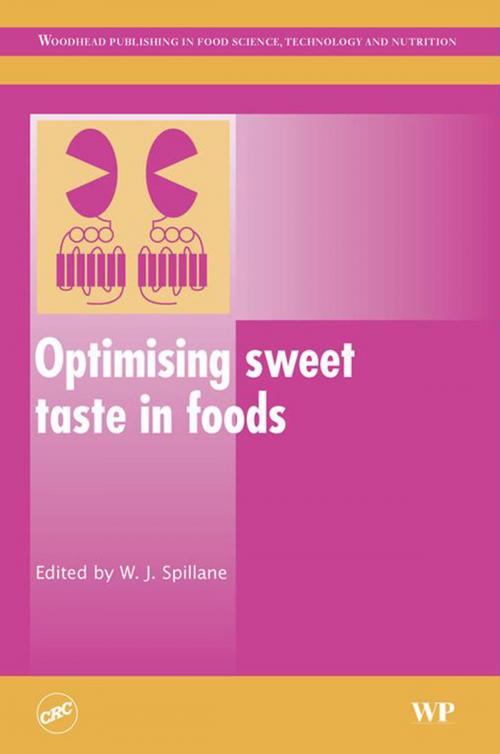| Author: | ISBN: | 9781845691646 | |
| Publisher: | Elsevier Science | Publication: | July 17, 2006 |
| Imprint: | Woodhead Publishing | Language: | English |
| Author: | |
| ISBN: | 9781845691646 |
| Publisher: | Elsevier Science |
| Publication: | July 17, 2006 |
| Imprint: | Woodhead Publishing |
| Language: | English |
A sweet taste is often a critical component in a consumer’s sensory evaluation of a food product. This important book summarises key research on what determines consumer perceptions of sweet taste, the range of sweet-tasting compounds and the ways their use in foods can be optimised.
The first part of the book reviews factors affecting sweet taste perception. It includes chapters on how taste cells respond to sweet taste compounds, genetic differences in sweet taste perception, the influence of taste-odour and taste-ingredient interactions and ways of measuring consumer perceptions of sweet taste. Part two discusses the main types of sweet-tasting compounds: sucrose, polyols, low-calorie and reduced-calorie sweeteners. The final part of the book looks at ways of improving the use of sweet-tasting compounds, including the range of strategies for developing new natural sweeteners, improving sweetener taste, optimising synergies in sweetener blends and improving the use of bulk sweeteners.
With its distinguished editor and international team of contributors, Optimising sweet taste in foods is a standard reference for the food industry in improving low-fat and other foods.
- Investigates what determines consumer perceptions of sweet taste
- Looks at improving the use of sweet-tasting compounds
- Explores strategies for delivering new natural sweeteners
A sweet taste is often a critical component in a consumer’s sensory evaluation of a food product. This important book summarises key research on what determines consumer perceptions of sweet taste, the range of sweet-tasting compounds and the ways their use in foods can be optimised.
The first part of the book reviews factors affecting sweet taste perception. It includes chapters on how taste cells respond to sweet taste compounds, genetic differences in sweet taste perception, the influence of taste-odour and taste-ingredient interactions and ways of measuring consumer perceptions of sweet taste. Part two discusses the main types of sweet-tasting compounds: sucrose, polyols, low-calorie and reduced-calorie sweeteners. The final part of the book looks at ways of improving the use of sweet-tasting compounds, including the range of strategies for developing new natural sweeteners, improving sweetener taste, optimising synergies in sweetener blends and improving the use of bulk sweeteners.
With its distinguished editor and international team of contributors, Optimising sweet taste in foods is a standard reference for the food industry in improving low-fat and other foods.
- Investigates what determines consumer perceptions of sweet taste
- Looks at improving the use of sweet-tasting compounds
- Explores strategies for delivering new natural sweeteners















